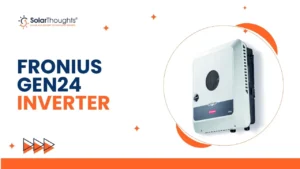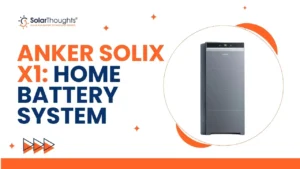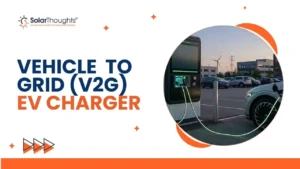Queensland Solar Feed-In Tariffs for Households by Retailer
Queensland homeowners with solar power must understand how to work feed-in tariffs (FITs). A FIT is the reward you earn from your electricity supplier when you send out your solar power to the grid. The rates can alter based on which retailer and scheme you go with, so you must evaluate different choices to guarantee receiving optimal value.
Table of Contents
ToggleWhat Are Solar Feed-In Tariffs (FITs)?
Feed-in tariffs (FITs) are payments that energy sellers provide to solar customers for the additional solar power they contribute to the grid. The amount you receive can vary based on several factors, such as your retailer, the plan you choose, and the size of your solar panel system.
Key points to remember about FITs in Queensland:
- FITs vary by retailer, and each may have different rates for different plans.
- FITs are typically paid per kilowatt-hour (kWh) of electricity you export to the grid.
- Higher FITs are available on some plans, but these may come with conditions such as caps on daily exports or system size limits.
Queensland Feed-In Tariff Rates: Comparison Table
The following comparison table displays the minimum and maximum FITs for households by electricity retailers in Queensland, along with additional conditions related to each retailer’s solar plans.
| Retailer | Min Solar FIT | Max Solar FIT | Retailer Solar Conditions | Details |
|---|---|---|---|---|
| ENGIE | 5.5 | 12.0 | Higher feed-in tariff on some plans is capped to first 8kWh per day. Solar plans are limited to a solar system with less than 10kW output. | View ENGIE feed-in tariffs |
| Origin Energy | 4.0 | 12.0 | The higher feed-in tariff on the Solar Boost plan is capped to the first 14kWh per day. | View Origin Energy feed-in tariffs |
| GloBird Energy | 1.0 | 11.0 | Higher feed-in tariff on SolarPlus plans capped to the first 8kWh exported per day. | View GloBird Energy feed-in tariffs |
| Alinta Energy | 8.0 | 10.0 | The PV system is limited to a 5kW inverter capacity. | View Alinta Energy feed-in tariffs |
| AGL | 4.0 | 10.0 | The higher feed-in tariff on the Solar Savers plan is capped to the first 10kWh per day and limited to PV systems up to 10kW. | View AGL feed-in tariffs |
| EnergyAustralia | 4.6 | 10.0 | The higher feed-in tariff on the Solar Max plan is capped at the first 12kWh per day. Feed-in tariff is only for systems up to 10kW in ACT & NSW and 30kW in QLD and SA. | View EnergyAustralia feed-in tariffs |
| CovaU | 5.5 | 10.0 | – | View CovaU feed-in tariffs |
| Red Energy | 1.0 | 8.0 | Higher feed-in tariff on some plans in NSW capped at 5kWh per day. | View Red Energy feed-in tariffs |
| Sumo | 1.0 | 6.0 | 10kW PV size limit | View Sumo feed-in tariffs |
| Diamond Energy | 0.0 | 5.2 | – | View Diamond Energy feed-in tariffs |
| 1st Energy | 1.5 | 5.0 | Maximum 10kW inverter capacity on 1st Solar Bonus plans in NSW, QLD, SA & VIC. | View 1st Energy feed-in tariffs |
| Ampol Energy | 5.0 | 5.0 | – | View Ampol Energy feed-in tariffs |
| Dodo | 3.5 | 3.5 | Maximum 10kW panel size and an inverter system no greater than 10kW in QLD. | View Dodo feed-in tariffs |
| Next Business Energy | 3.3 | 3.3 | – | View Next Business Energy feed-in tariffs |
| OVO Energy | 0.0 | 3.0 | – | View OVO Energy feed-in tariffs |
| Future X Power | 3.0 | 3.0 | – | View Future X Power feed-in tariffs |
| Momentum Energy | 0.0 | 2.9 | Higher feed-in tariff plans are limited to PV systems up to 10kW. | View Momentum Energy feed-in tariffs |
| Energy Locals | 0.0 | 2.0 | Higher feed-in tariff on some plans is capped to first 8kWh per day. | View Energy Locals feed-in tariffs |
| Kogan Energy | 0.0 | 1.4 | – | View Kogan Energy feed-in tariffs |
| Powershop | 0.0 | 1.4 | The Feed-in tariff is only for systems up to 10kW in QLD. | View Powershop feed-in tariffs |
| Amber | 0.0 | 0.0 | Feed-in tariffs are linked directly to actual wholesale electricity prices in half-hourly intervals. | View Amber feed-in tariffs |
| Tango Energy | 0.0 | 0.0 | – | View Tango Energy feed-in tariffs |
| Pacific Blue | 0.0 | 0.0 | – | View Pacific Blue feed-in tariffs |
| Nectr | 0.0 | 0.0 | – | View Nectr feed-in tariffs |
Understanding the Terms and Conditions
While the chart on top gives a simple contrast of solar feed-in rates for diverse retailers, it’s important to get are conditions and terms related to every plan. Here are some critical factors to think about:
- Export Restrictions: Numerous programs impose a cap on the electricity quantity that you can export to the grid at the increased FIT rate. For instance, specific plans restrict exports to 8kWh or 10kWh each day.
- Limitation on System Size: Certain plans are applicable only for clients possessing solar systems of particular dimensions. It is important to verify if your system aligns with the retailer’s requirements before enrolling.
- Variable FITs: FITs, they can alter. Sometimes quick, depending on market situations. Always check the rules of the retailer to make sure you know about any modifications that might happen.
Additional Notes
- The FITs displayed on this page do not include GST. If you have an ABN, GST will apply.
- If you are getting a premium feed-in tariff right now, please remember that these programs do not accept new participants. In case you haven’t joined a premium FIT already, the only available option for you would be the standard FIT.
- These types of plans are not part of this table because their rates change each day. For learning more about these plans, kindly go see WATTever’s rates pages for Amber.
- Plans that need a battery or an EV are not included because only a few consumers meet the criteria. Yet, these plans can still be seen on their corresponding retailer’s feed-in tariff web pages.
How to Choose the Best Feed-In Tariff for Your Home
The correct FIT selection is based on the size of solar energy system, daily use of energy and the amount of power you want to send back to the grid. Let me guide you with some steps:
- Evaluate Your Solar System: Look at the size of your system and match it with the constraints mentioned in the conditions.
- Calculate Your Exported Energy: Check how much energy you normally send to the grid. If you send a lot, a bigger FIT with a larger everyday export limit will be more beneficial for you.
- Check Terms and Conditions: Always examine the complete terms of the seller to understand any limits, charges, or conditions.
- Change if Required: In case your present FIT is not sufficient, think about changing to a plan having a higher FIT. This will help you get the most benefit from exporting energy.
Having knowledge about solar feed-in tariffs (FITs) in Queensland is crucial for maximizing the financial benefits of your solar system. It’s important to compare the lowest and highest FITs offered by various retailers and to be aware of any associated rules or conditions. Before choosing a plan, be sure to thoroughly read the terms and conditions of the retailer to ensure they align with your home’s needs.
To start comparing plans, visit the individual pages of the retailers linked in the table above. This will help you make an informed decision regarding payments for your solar energy exports.






